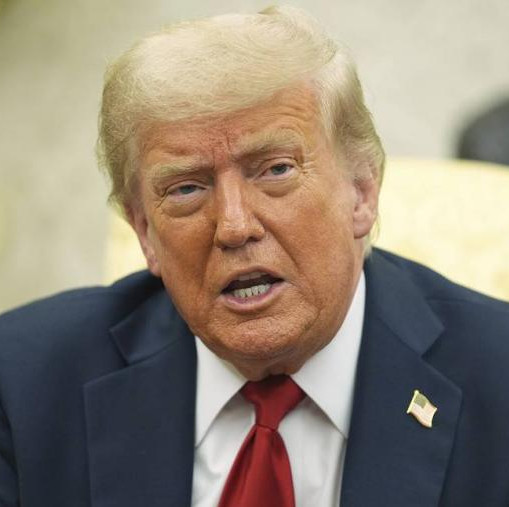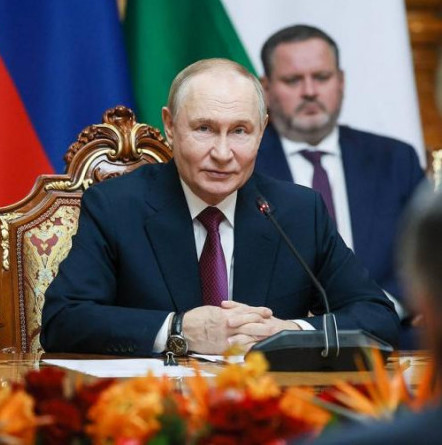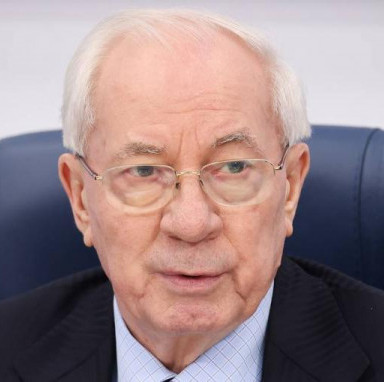InfoRos News Agency, Far East Office
In this article, we’ll be trying to explain what a “regional missile defense” is, why its development is so long and painful, and whom it is supposed to protect. We’ll also discuss problems its deployment will entail and threats it is supposed to repel.
On July 5, 2006, North Korea test-fired six or seven small and medium-range ballistic missiles almost simultaneously from two different launchpads. Those launches had been expected for so long, that even U.S. intelligence personnel had grown tired of waiting. And it was right after the most important U.S. holiday, the Forth of July – the Independence Day. Well, anyway, forgetting the U.S. intelligence’s embarrassment, fortunately, the Japanese were on the alert, and they had had no parties on the previous day. Three months later, North Korea advanced its new “defense initiative”: it tested its first nuclear device. The U.S. intelligence got into a fix again, and had to argue for a whole week that the explosion had been non-typical, maybe not even quite nuclear… Two blunders running in such a sensitive sphere could not but annoy the Congress and the Administration. They had thoroughly reformed the intelligence community and created the Director of National Intelligence post (prior to the establishment of the DNI, the intelligence community had been headed by the CIA chief, who headed both for one salary), but to no avail. The U.S. intelligence community “took revenge” three months later by announcing, after weeks of intensive analytical work, that China had tested an anti-satellite weapon on January 12, destroying its own old meteorology satellite by a ballistic missile. China must have been taken aback by that statement. After a few days of reflecting, it confirmed, albeit vaguely, the existence of a national anti-satellite program. Why not? Beware! Sorry for the sarcasm, but it is virtually impossible nowadays to conceal a booster launch or a satellite or a warhead orbited higher than 800 kilometers. No wonder Russia’s Defense Minister Sergei Ivanov sounded skeptical about the U.S. statement. In October 2006, however, he did not hesitate to confirm North Korea’s nuclear tests.
All the aforementioned events have to do with the article’s topic. The strategic situation in the North-East Asia is changing rapidly these days. North Korea is a clear missile technologies leader among the “non-western” nations. It has created a whole arsenal of ballistic missiles and is exporting its technologies to Iran, Pakistan and other countries. Earlier these missiles were capable of hitting U.S. bases in the Pacific, but could only serve as a means of psychological pressure because of poor precision and weak warheads. However, if they mount nuclear warheads on those missiles, North Korea could dictate terms to the whole region. As for China, if it indeed creates anti-satellite weapons, the U.S.’ current military supremacy would be jeopardized. In this situation the U.S. officials must be regretting its choice of “national” (strategic) missile defense instead of a “regional” one.
This is how it happened. “Regional” missile defense was Democrat President Bill Clinton’s favorite project, and the only option for its deployment – North-East Asia – was discussed back in the 1990s. Then the Washington administration changed, which is always a painful process: new leaders often have their own priorities, different from their predecessors’ opinions. In addition, the September 11 attack made the Americans feel vulnerable at home for the first time in history. In that situation, a national missile defense system seemed like an effective “cure-it all” solution, something to protect the U.S. own territory from a hypothetical missile attack by the so called “outcast” nations (which basically meant China, even if not mentioned directly). The idea than won George Bush additional public support.
The current Republican administration which has made a record number of blunders in Iraq and Afghanistan will hardly remain in power after next year’s presidential elections. But even if it will, missile-defense priorities will have to be revised.
Let us remind you how it all began. The regional missile defense concept emerged back in 1991, during the first war with Iraq, when the U.S. and other Western nations found they had no reliable means of defense against small and medium-range ballistic missiles. U.S. and NATO were than planning to impose their “democratic values” throughout the world, while many “third-world” countries made efforts to arm their forces with ballistic missiles and even launched nuclear programs.
The eventual regional missile defense concept formed by the end of the 1990s. A multicomponent system was supposed to destroy small and medium-range ballistic missiles at every phase of their flight paths, to protect vanguard groups of the U.S. forces and important facilities in the territories of U.S. allies. The idea was good, and the Congress accurately allotted billions of dollars for it every year. However, it is widely known that real life is rarely as smooth as a Powerpoint presentation or a printout.
True, U.S. administration’s strategic priorities changed as was described above. It happened for serious political and technological reasons.
First of all, the available missile defense systems were technologically defective. Moreover, MD development projects in the U.S. have involved a record number of deceptions and false information. One “successful” test often followed five or six failed ones, only those were never made public. As for the few cases of successful interception, they were registered in ideal conditions. Indeed, none of the U.S. missile defense systems has been finalized to a combat level over the past 20 years. Even MDA chief Gen. Obering confirms that all the U.S. is using today is 11 experimental “strategic” antimissiles in Alaska and California and 10 more “regional” Standard missiles aboard Ticonderoga-class cruisers. That, despite the $100 billion directly invested in MD projects over that period.
The problem must be deeper than technological flaws; it rather has to do with the interrelations between political government, armed forces and defense corporations. For example, U.S. air force still uses F-15/16/18 jets designed in the early 1970s, while dozens of ambitious projects have been launched over the past 30 years. Billions of dollars have been spent, but a few years into a project’s implementation, it had to be terminated, either by the armed forces which lost patience with the irresponsible designers, or by the Congress which found that the taxpayers’ money was wasted.
There are reasons to believe that the regional missile defense project is heading for a similar end.
Anyway, the U.S. is a sovereign state responsible for its own budget, and its government must know what it’s doing. As for its unilateral withdrawal from the 1972 ABM regime, formally, it didn’t even violate the international law. What is unclear is why the U.S. reacted so sharply to China’s January 12 test of a “kind of” missile defense system based on its intercontinental ballistic missile. Again, formally, China didn’t violate any laws either.
This detailed discussion of the U.S.’ approach to the development of a regional antimissile system has two reasons. One reason is economic. It would be naïve to think that the U.S. Congress, which is so experienced in finding a correct use for each budget cent, would connive at the flagrant squandering of taxpayers’ money under the various missile defense programs. Powerful defense corporations’ lobbies cannot be overlooked, but again, in a democracy and a market economy, even a most powerful monopoly cannot force the government to buy a product it doesn’t need. It rather looks like indirect budget financing of priority development projects, so that the U.S. could retain its leading position in the world economy. If that is the case, it is unfair competition. What’s more, Washington even succeeded in convincing Japan, alarmed by the North Korean nuclear program, to contribute its latest technological achievements to use in its missile defense systems. Isn’t this truly American pragmatism?
Military and political aspects of the regional missile defense are no less important. True, U.S. forces are permanently deployed in North-East Asia; the U.S. also has responsibilities to U.S. protect Japan, South Korea and Taiwan. But it also has European allies – NATO member states – which it has to protect by default. However, those strategic regions are not mentioned in the regional missile defense plans. (We do not mention the newly admitted NATO members like Poland and Czechrep, as they are a subject for a whole different discussion).
One might guess that different nations in a specific region have different attitudes to the idea of deploying an antimissile system to that region. Once the system is in place, the U.S. will of course dominate its operation. First, most ABM technologies are classified, and the U.S. would hardly venture to confide even in most faithful allies. Second, a missile defense system offers very limited decision-making time. Americans would not waste it on agreeing the use of force with the regional nations’ governments. It means the countries which are supposed to be “protected” by the U.S. antimissile shield, will be losing a fair part of their sovereignty and become hostages of possibly erroneous decisions. What would have happened last July if the Americans had decided to intercept North Korea’s missiles?
It follows that the only two nations interested in hosting regional ABM elements are Japan and Taiwan. Japan is highly concerned with North Korea’s growing nuclear potential. It could agree to delegate the decision-making right to the U.S., unless…
The “unless” clause is best described by Israel which helplessly observed Iraq’s ballistic missiles exploding in Haifa and Tel-Aviv in 1991. An effective missile defense is crucial for Israel, crucial for survival, and that country is intensively working on relevant projects. Israel says that if one’s adversary uses nuclear weapons, only a 100-percent effective ABM would help. Otherwise, if one missile hits its target, it would be enough to raze a country like Israel to the ground. A 100-percent effectiveness is impossible to guarantee today or in the near future. That is why Israel is insisting on a “preventive” strike on Iran.
This rhetoric is, of course, inadmissible; but it is understandable. Japan’s situation is not much different from Israel’s, as three or four nuclear warheads would be enough to destroy it. Larger countries like Russia, U.S., China and India are in a somewhat better position, cynical as it sounds, as none of the “outcasts” can do them irreparable damage. The U.S. will, of course, press on with its regional missile shield ignoring their allies’ reactions, as it would increase its vanguard forces’ safety in any case. As for Japan…
On the other hand, there are other options besides these two (or three?) evils. Suffice it to recall that, when the U.S.’ and USSR’s nuclear potentials reached an absurd level – enough to destroy both nations and the whole planet, too – common sense finally prevailed. The sides sat down to the negotiating table and created a system of nuclear detainment, reduction, and verification of the process. The same could be done today. Instead of developing a fabulously expensive regional antimissile system which basically guarantees nothing, they had better create an effective collective security system in the region.
One should give a little more thought to the possible consequences of the decisions one makes. Many problems could be avoided this way – but it would be too good to be true.


